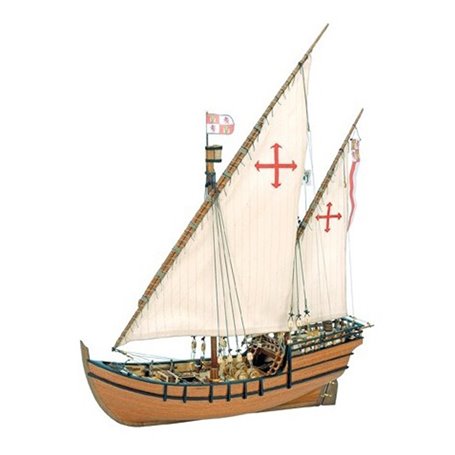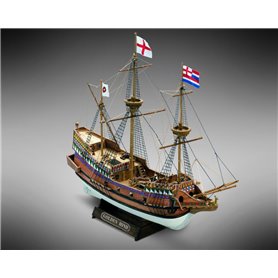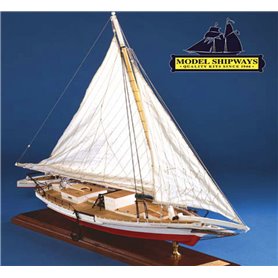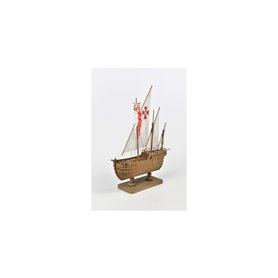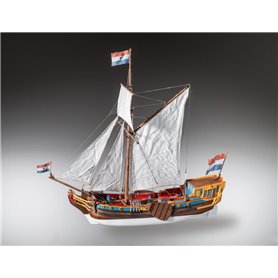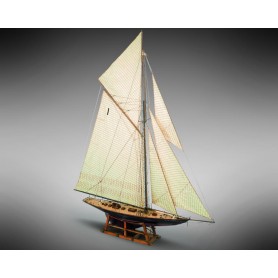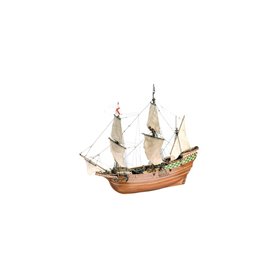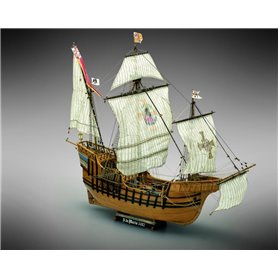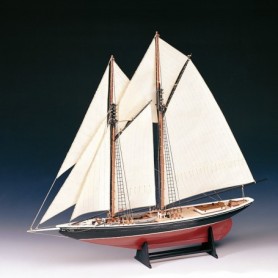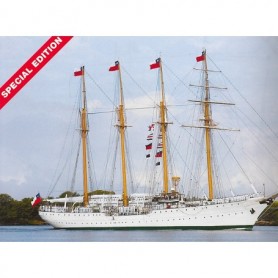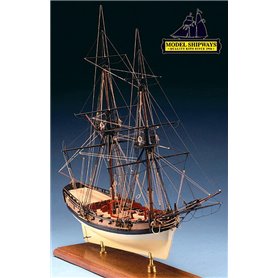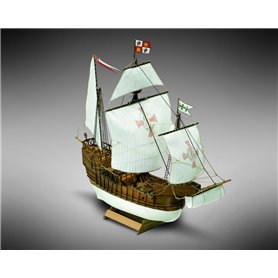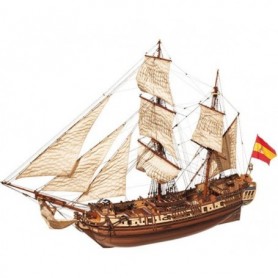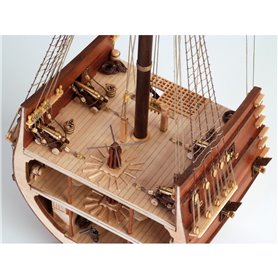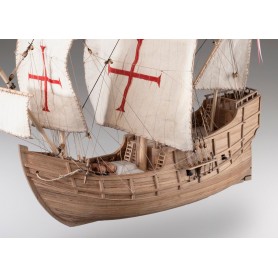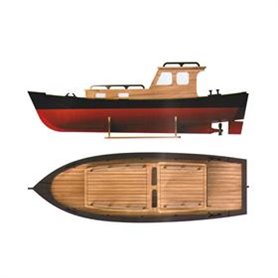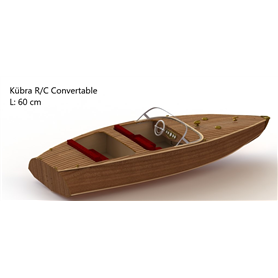Caravel Santa Maria
Caravel Santa Maria
-
 Secure payment in our shop!
Secure payment in our shop!
Caravel Santa Maria.
Wooden ship model of Santa Maria caravel (nao from 15th Century) at 1:65 scale. This fabulous naval modeling kit is a must in your ship collection. It contains high quality parts. The model is aimed at modelers with an intermediate level skills.
SANTA MARIA CARAVEL WOODEN MODEL KIT: ESSENTIAL SHIP MODEL
The wooden ship modeling kit of Santa Maria Caravel at 1:65 scale cannot be absent in the collection of faithful replicas of any ship modeler, its construction is inescapable because it is one of the essential vessels in history naval of the planet. It is aimed at fans of this hobby with an advanced level of skills for the construction of this wonderful scale model.
Find out the details of this museum piece on this video:
The modeler will find in this kit parts of clear high quality birch wood cut with precision thanks to the laser; magnificent details made of metal and photo-etched; unbeatable and reinforced sails made of cotton, ready to be placed -this model includes the templates in die-cut cardboard to be able to paint their characteristic crosses-; and, as a gift so that the model is perfectly exposed, like an artwork that is, a wooden exhibition base with a nominal metal plate.
It has a DVD for computers (Windows and Mac) with completely redesigned instructions: clarifying step-by-step photographs in nine different languages, as well as several video tutorials, facilitating its assembly. The kit does not contain printed instructions. Once Santa Maria Caravel wooden model is built, its measurements are as follows: 19.80'' (503mm) length, 10.39'' (264mm) width and 19.60'' (498mm) height.
More realism fo your model rawith a Set of 10 Metal Figurines of the Crew Members 1:65 scale. It is sold separately, ready to be assembled and painted. It is suitable for galleons and caravels. You can also paint your model with the Paints Set for Caravels and Galleons, for sale separately.
HISTORY OF NAO SANTA MARIA: WRONGLY CALLED CARAVEL
Yes, it is possibly the most important ship in history because it was the one where Christopher Columbus was when he discovered America at the end of the fifteenth century, specifically, in 1492. Santa Maria Nao, wrongly called 'caravel' -the other smaller two boats were really caravels, La Niña and La Pinta-, although the three ships were considered caravels in the original documents. In the beginning, Santa Maria’s name was La Gallega, whose owner was Juan de la Cosa.
The adventure began not to discover a new continent, but to find a new safe route to the Pacific Ocean. His first stop was in the Canary Islands, specifically, in La Gomera in order to collect more supplies and fix the damages that the nao could have, built with wood from Cantabria.
In October 12th, after several crew riots a few day, the cabin boy Rodrigo de Triana spotted land: first they arrived at Guanahani Island, which they called San Salvador, in the Bahamas archipelago, until it reached another one that he named La Española -currently, Haiti-, which did bring Santa Maria "tomb". During the night of December 24th, the nao remained stranded because of a sandbank due to a malpractice of the lookout man. Immediate consequence? The coral reefs destroyed the hull of the boat, the crew had to climb on La Niña. In this sense, it was rumored that Columbus was interested in that sinking to return since they had not found gold in bulk, trying to deceive the Catholic Kings in order to return to Castile. Finally, with the materials that were left of the sinister Santa Maria nao, they lifted the Christmas Fort with palisade, the first European in the New Continent.
Then, yes, Columbus returned to the Iberian Peninsula with La Pinta and La Niña, to later return to America, where he ran into the death of the forty colones he had left. Why? It seems that the Indians did it to punish them for having stolen their food and their women. Surprisingly for the time, Columbus did not penalize the natives leader, but allowed other abuses, while Isabel La Católica forbade the punishments to be carried out, but she was not given much attention.
- Scale
- 1:65

